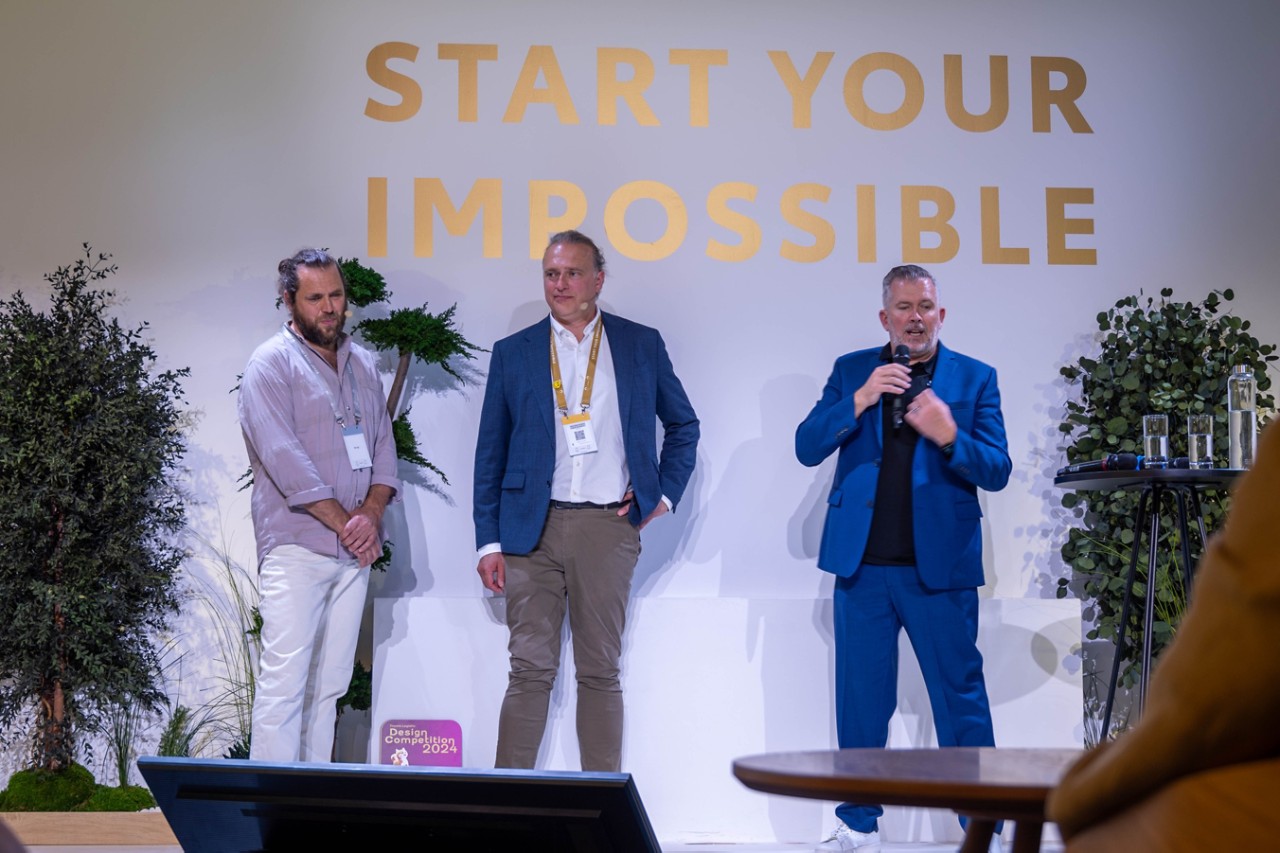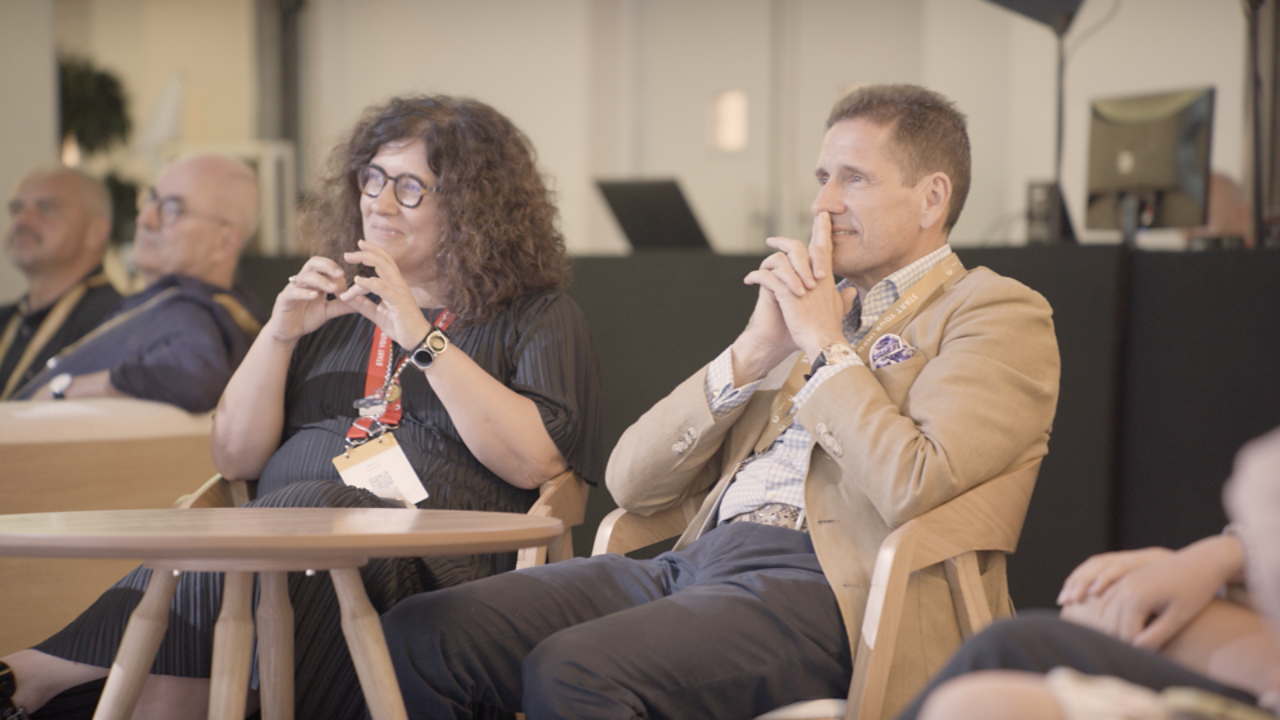TLDC AWARD CEREMONY IN TOYOTA HOUSE DURING PARIS OLYMPICS 2024
Gold, silver, bronze: only top winners in the Toyota Logistic Design Competition 2024 in Paris.
With a spectacular ceremony held at the Toyota House in Paris – especially erected for the company’s partnership with Paris 2024 – the latest Toyota Logistic Design Competition, Every little bit counts, in collaboration with Toyota Motor Europe, Toyota Europe Design Development (ED²), Kinto Europe and Toyota Material Handling Design Center ends as its winners are revealed.
About Toyota Logistic Design Competition
Held biannually, the Toyota Logistic Design Competition celebrates 10 years since its first edition. Students are challenged to think up innovative, no-copy-paste, out-of-the-box ideas to provide sustainable solutions for different problems in logistics.
The idea behind this year’s theme Every little bit counts is that the death of one thing gives life to another. Since our planet only has one life, the challenge this time around was promoting circular economy through logistics. Possibly one of the bigger challenges ever set in this competition. Which means submissions had to transcend traditional design with a widened scope.
Monica Perez Lobo, VP Sustainability Toyota Motor Europe, was extremely positive: “Design is the first step towards sustainability: how materials are used, how vehicles can be dismantled and recycled in the future. I can see the students really have this mindset in terms of how to contribute to the planet and society with their designs, which is great.”
Nearly 1000 designers from over 50 countries showed their interest in the competition. 160 submitted their creative concept, many of which of outstanding quality. In 2 jury rounds, 10 finalists were selected and presented at Milan Design Week back in April.
New this year, there are only top prize winners in three categories, in the areas of transportation & product design, user interface, and business innovation design.
Toyota Logistic Design Competition Category Industrial & Automotive Design
Nicolà Borrer from Royal College of Art, London, UK, with Micro Cab
About MICRO CAB
In a nutshell, Toyota Micro Cab envisions a circular and self-sufficient autonomous mobility service for inclusive, sustainable cities in the future. Solar-powered micro cabs transport people or cargo over short commutes in urban areas. A highly efficient parking method saves valuable city space and allows for energy balancing between the cabs. Each city will have their unique cabs, which are integrated in the local public transport network for a circular parts and material economy. The concept thrives as a network, with cabs communicating to efficiently meet all mobility needs. Using swarm intelligence, they distribute energy amongst the fleet and strategically park to optimise operations.
Toyota Logistic Design Competition Category UI, UX & Service
Maren Javenes (UX designer) / Elise M.L. Almaas (Service designer) / Anne Selseng (UX designer) from the Norwegian University of Science and Technology, Trondheim, Norway with Enviru
About ENVIRU
“Meet our game-changing robot, redefining litter collection,” that is how Maren, Elise and Anne introduce their awarded design. Recognising challenges around littering, the student group developed a rewards app with gamification.
Users capture trash photos, earning redeemable points for store discounts.
A long-term value concern arose in that the app did not remove the barrier associated with litter picking.
Discussing transport challenges and litter management led to a garbage robot constituting effective solutions.
Elise: “We wanted to take the shame away from picking up litter and reward people for wanting to do the right thing. The UX system complements the robot.”
Toyota Logistic Design Competition Category Business Innovation Design
Simon Lavender, from California State University, Long Beach, USA with Bloom Charge
About BLOOM CHARGE
As the designer describes the concept, Bloom Charge is about creating the fresh air that fuels our future. The number of people living in cities will only increase. Denser urban infrastructure traps heat and raises air pollution levels. Bloom is effectively a circular fuelling system with tree-like fuelling stations based on biotechnology that cool and clean urban air with algae. A grove of Bloom canopies offers endless opportunities to a multifuel society, in logistics and beyond.
Toyota Logistic Design Competition Category Ian Cartabiano Award
Juyeong Son, from Coventry University, Coventry, Korea with Flex
The work of Juyeong Son, Flex, earned the prestigious Ian Cartabiano Award, a special award overarching all categories, decided upon by the VP Advanced Design for Lexus & Toyota at Calty Design Research. Ian evaluated the works across the board to determine which project paid the most attention to design. The sheer scale of task did not make it an easy pick, given the outstanding quality of many of the entries.
About FLEX
Flex is an all-in-one mobility sharing platform answering to urban congestion and urban delivery issues. Dynamic, bike-size delivery vehicles have a 360° driving experience and make use of gimbal technology, which permits a body or parcel to incline freely in any direction or suspends it so that it will remain level when its support is tipped. The stabalising effect prevents damage of the storage compartment's contents like food or small, fragile products.

パリ2024オリンピック、パラリンピックのために設営されたパリのトヨタハウスで、授賞式が行われました。最新のトヨタロジスティックデザインコンペティション「Every little bit counts」が、トヨタモーターヨーロッパ、トヨタヨーロッパデザインデベロップメント(ED²)、Kintoヨーロッパ、トヨタマテリアルハンドリングデザインセンターとのコラボレーションで行われました。
トヨタ・ロジスティック・デザイン・コンペティションについて
2年おきに開催されるトヨタロジスティックデザインコンペティションは今年10周年を迎えます。
ED²は共同開催に参加するのは2020年からで2回目となります。
今年のテーマ「Every little bit counts」今回の課題は物流を通じたサーキュラーエコノミーの推進でした。おそらく、このコンペティションで設定された大きなスケール課題の1つでしょう。
トヨタ・モーター・ヨーロッパのサステナビリティ担当バイスプレジデントであるモニカ・ペレス・ロボ氏は、「デザインはサステナビリティへの第一歩です。材料の使用方法、車両を将来どのように解体してリサイクルできるかなどです。学生たちは、自分たちのデザインで地球や社会にどのように貢献するかについて、本当にこのような考え方を持っているのがわかります。これは素晴らしいことです。」 50カ国以上から約1000人のデザイナーが登録。160が最終案提出をし、その多くが優れた品質でした。審査は2回あり、一度目はデザイナーが審査、2回の審査で10人のファイナリストが選ばれ、4月に開催されたミラノデザインウィークで発表されました。
今年は新たに、輸送および製品デザイン、ユーザーインターフェース、ビジネスイノベーションデザインの3つのカテゴリーが作られました。
トヨタロジスティックデザインコンペティション部門 インダストリアル&オートモーティブデザイン ニコラ・ボラー(Royal College of Art、ロンドン、イギリス)、マイクロキャブ MICRO CABについて 一言で言えば、トヨタマイクロキャブは、将来、包括的で持続可能な都市のための循環型で自給自足の自律型モビリティサービスを想定しています。太陽光発電のマイクロキャブは、都市部の短い通勤で人や貨物を輸送します。高効率の駐車方法により、貴重な都市スペースを節約し、タクシー間のエネルギーバランスをとることができます。各都市には独自のタクシーがあり、それらは地元の公共交通ネットワークに統合され、循環型部品と材料経済を実現します。このコンセプトはネットワークとして繁栄し、タクシーは通信してすべてのモビリティのニーズを効率的に満たします。AIを使用して、フリートにエネルギーを分配し、戦略的に駐車して運用を最適化します。
トヨタロジスティックデザインコンペティション部門
UI・UX・サービス Maren Javenes(UXデザイナー)/Elise M.L. Almaas(サービスデザイナー)/Anne Selseng(UXデザイン)
/ Anne Selseng (UXデザイナー) はノルウェー大学からの参加です。「町にあるゴミ箱を再定義する、革新的なロボットをご紹介します」と、マレン、エリーゼ、アンは受賞したデザインを紹介しました。ポイ捨てをめぐる課題を認識した学生グループは、ゲームぽい機能を備えた報酬アプリを開発しました。 ユーザーはゴミ箱の写真を撮影し、店舗の割引と交換可能なポイントを獲得できます。運搬の課題やゴミ管理について調べる中ゴミ処理ロボットが効果的な解決策となりました。
エリーゼ:「私たちは、ゴミを拾うことから恥ずかしさを取り除き、正しいことをしたいと思っている人々に報酬を与えたかったのです。」
トヨタロジスティックデザインコンペティション部門
ビジネスイノベーションデザイン サイモン・ラベンダー、カリフォルニア州立大学、ロングビーチ、米国、ブルームチャージ BLOOM CHARGEについて デザイナーがコンセプトを説明するように、Bloom Chargeは私たちの未来を活気づける新鮮な空気を作り出すことです。都市に住む人の数は増える一方です。都市インフラの密度が高まると、熱がこもり、大気汚染レベルが上昇します。Bloomは、藻類で都市の空気を冷やし、きれいにするバイオテクノロジーに基づく木のような燃料ステーションを備えた、事実上の循環型燃料システムです。ブルームキャノピーの木立は、物流やそれ以外の分野で、マルチフューエル社会に無限の機会を提供します。
トヨタロジスティックデザインコンペティション部門 イアン・カルタビアーノ賞
ジュヨン・ソン(コベントリー大学、コベントリー、韓国) with Flex ジュヨン・ソン(Flex)の作品は、カルティ・デザイン・リサーチのレクサス&トヨタのアドバンスド・デザイン担当副社長が決定した、全カテゴリーを網羅する特別賞である名誉あるイアン・カルタビアーノ賞を受賞しました。FLEXは、都市の混雑と都市部の配送の問題に対応するオールインワンのモビリティシェアリングプラットフォームです。ダイナミックなバイクサイズの配送車両は、360°の運転体験を持ち、ジンバル技術を利用して、ボディや小包を任意の方向に自由に傾斜させたり、サポートが傾いたときに水平を保つことができます。安定化効果により、食品や小さくて壊れやすい製品など、収納コンパートメントの物品の損傷を防ぎます。


’👀Still, when seeing these outstanding designs, I was struck again by the students' talent and fresh ideas around the theme of "♻️ #circular economy through logistics’
